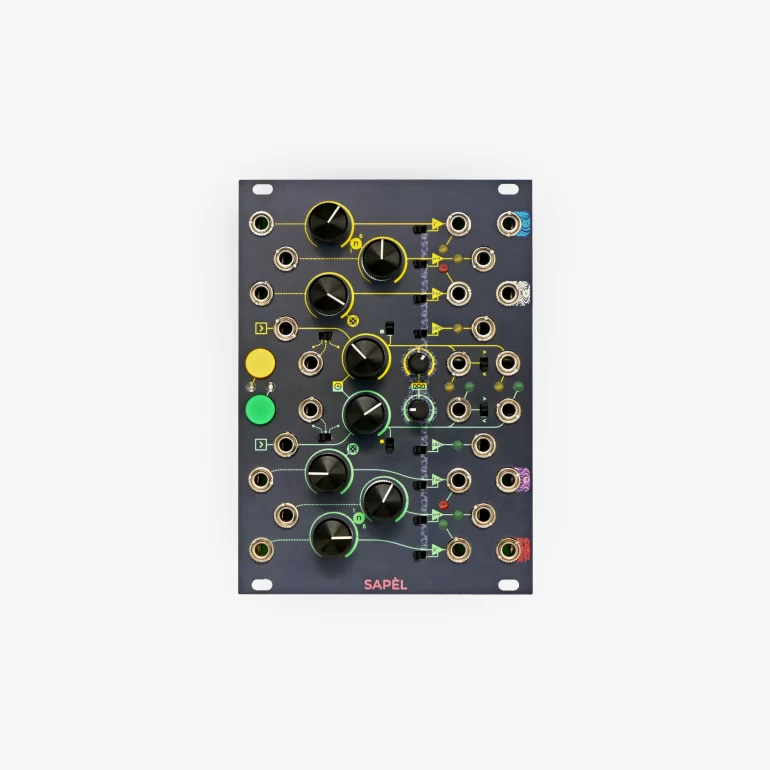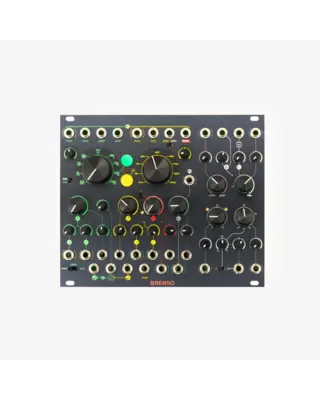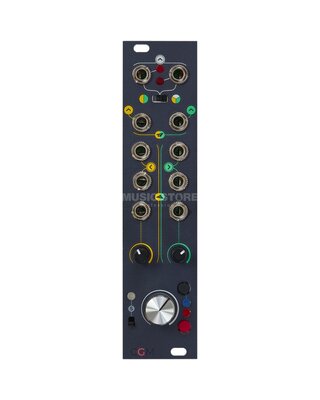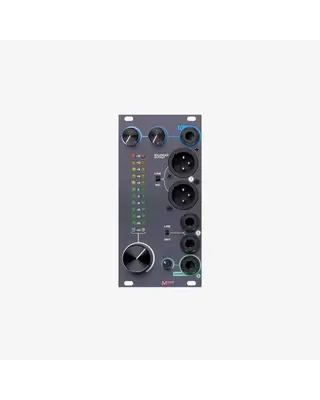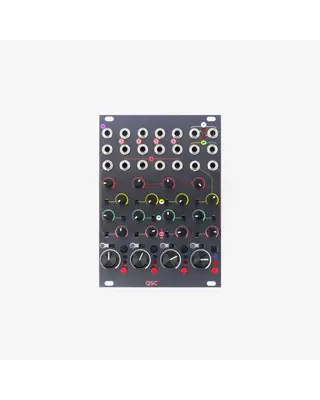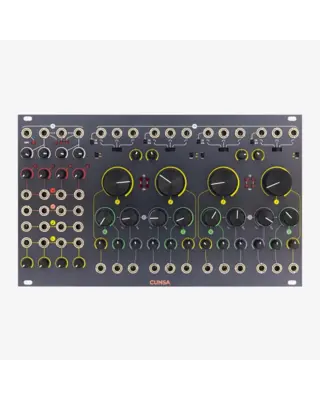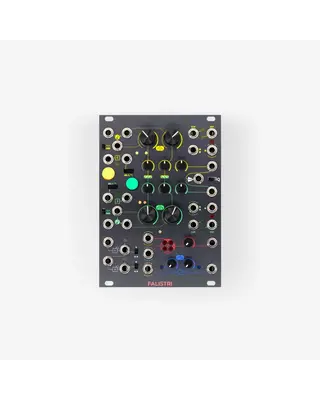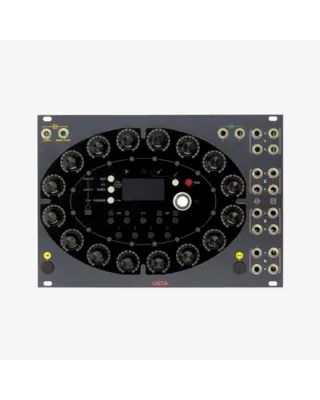SAPÈL
Tamed Random Source
sapèl / saˈpɛːl / s.m. [dialect from the northern area of Modena – Italy, uncertain etymology: probably from vulgar Latin sappa, ‘hoe’, meaning ‘roughly hoed’] – ‘mess’, ‘muddle’, ‘chaos’.
Its main section is composed of two identical clusters of four Sample and Hold circuits each (yellow and green), generating as many different random values simultaneously.
Three of the four S&H circuits in each cluster provide stepped random voltages: two are quantized (in “notes”), and one is unquantized; the last S&H circuit features an integrator to generate a fluctuating stream of random voltages.
The three stepped voltage generators are synced, which means they will output three different values simultaneously. The yellow and green generators have two independent internal clocks, which can be replaced with an external one, or temporarily overridden via an external signal or the manual button.
Regardless of the clock used, each S&H cluster features two clock outputs: one that mirrors the input clock and another that provides a random clock behavior.
On the other hand, the fluctuating voltage generator is independent and has its own potentiometer to define its rate.
Each of the two S&H clusters samples its values from analog noise, thus providing a “true” and completely unpredictable randomness.
The second section of SAPÈL features four analog noise outputs derived from the analog noise used to sample random values.
Size | 18 HP |
Depth
| 38 mm
|
Current draw | 270 mA @ +12 V
170 mA @ -12 V |
Recommended warmup time | 30 min |
CV input impedance | >90 KΩ |
Clock input impedance
| >90 KΩ (on positive pulses)
~30 KΩ (clamping negative pulses)
|
Built-in clock frequency (1)
| ~0.1–60 Hz
|
Quantized Random Voltages tolerance
| <1 %
+/-10 mV
|
Clock output (period)
| ~2 ms
|
Clock output (amplitude) | ~9 V
|
Sampling glitch | >400 ms
|
Blue noise output level | 10 dBU RMS
|
White noise output level
| 10 dBU RMS
|
Pink noise output level
| 7 dBU RMS
|
Red noise output level
| 4 dBU RMS
|
Noise output global tolerance
| +/-2 dB
|
(1) Lower frequencies (i.e., slower clocks) may be achieved with a negative CV used as modulation.
Manual you can find here: MANUAL


